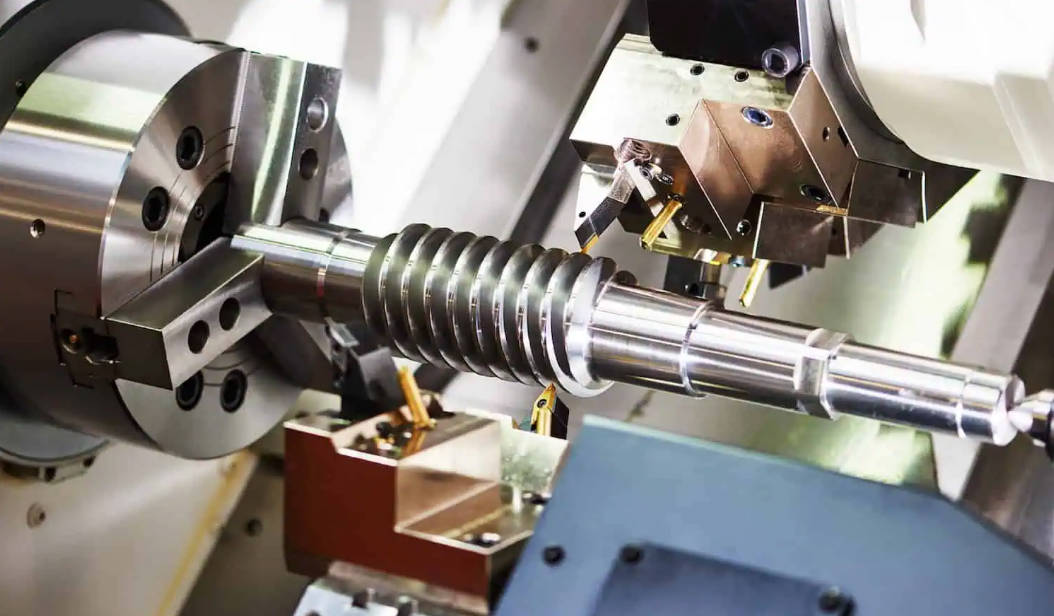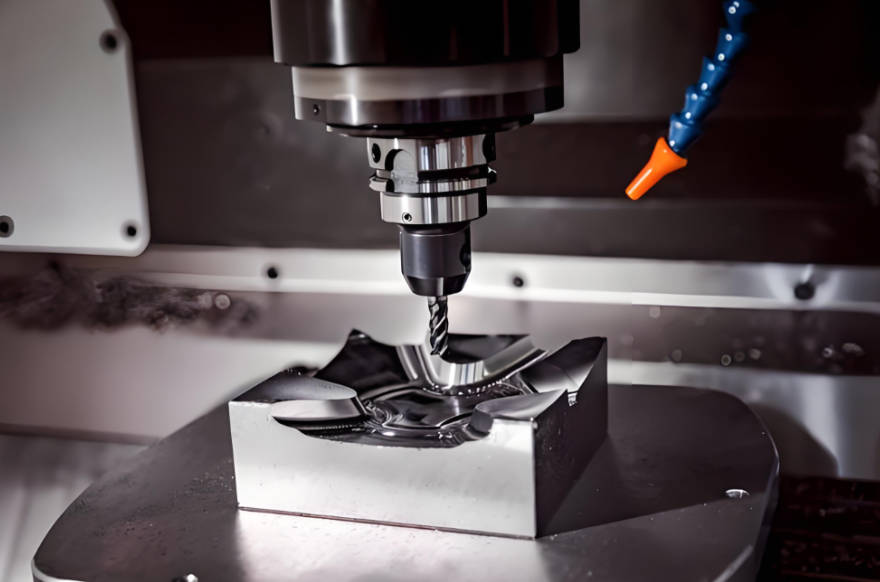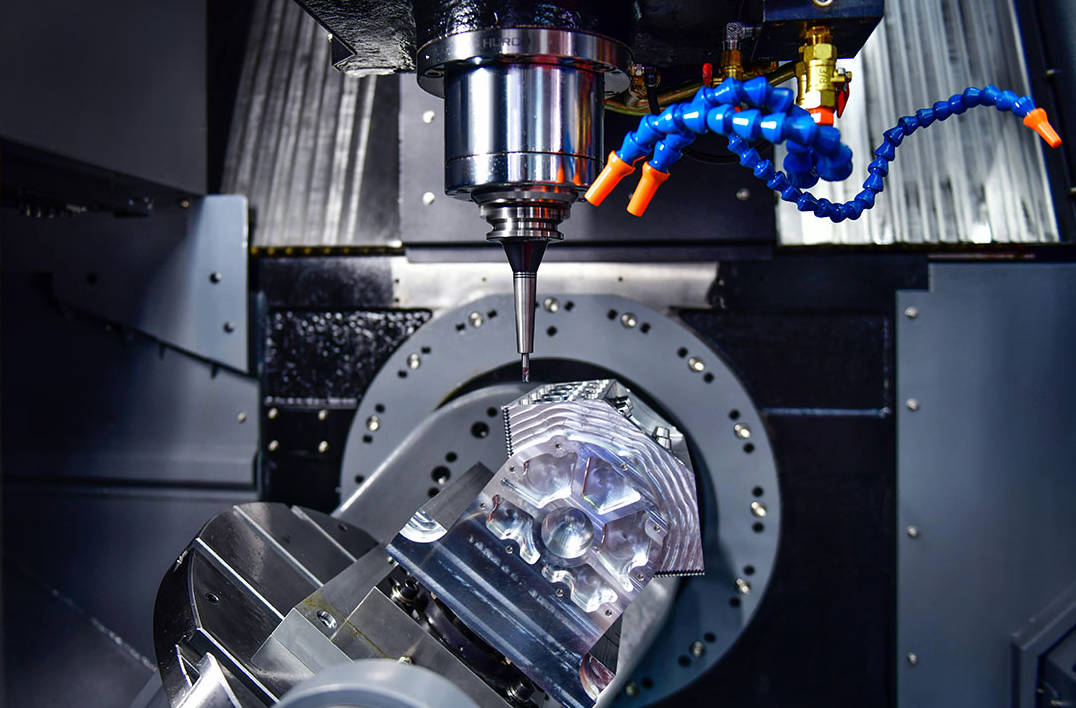Table of Contents
- Introduction
- Properties of Stainless Steel in CNC Machining
- Cost Factors in CNC Machining Stainless Steel
- Surface Finishes for Stainless Steel CNC Parts
- Common Questions and Concerns
- Applications of CNC Machined Stainless Steel Parts
- Choosing a CNC Machining Service Provider
- Conclusion
1. Introduction
In the world of precision manufacturing, few processes are as versatile and critical as Computer Numerical Control (CNC) machining. This subtractive manufacturing technology uses computer-controlled machines to precisely remove material from a solid block, creating highly accurate and complex parts. When this advanced technology is paired with a material as robust and reliable as stainless steel, the possibilities are nearly limitless.
This article serves as an in-depth guide for engineers, product designers, and procurement managers seeking to leverage CNC machining services for stainless steel components. We will address the most common questions and challenges, from understanding the material’s fundamental properties to optimizing costs and selecting the perfect surface finish.
Stainless steel is not just one material; it is a family of iron-based alloys containing a minimum of 10.5% chromium. This chromium content creates a passive, self-repairing oxide layer on the surface, granting the material its famous “stainless” quality. Because of its unique combination of strength, corrosion resistance, and aesthetic appeal, CNC machined stainless steel parts are indispensable in critical industries such as aerospace, medical, automotive, and food processing. Whether it’s a life-saving surgical instrument, a high-performance engine component, or a sanitary food-grade valve, stainless steel delivers reliability where it matters most.
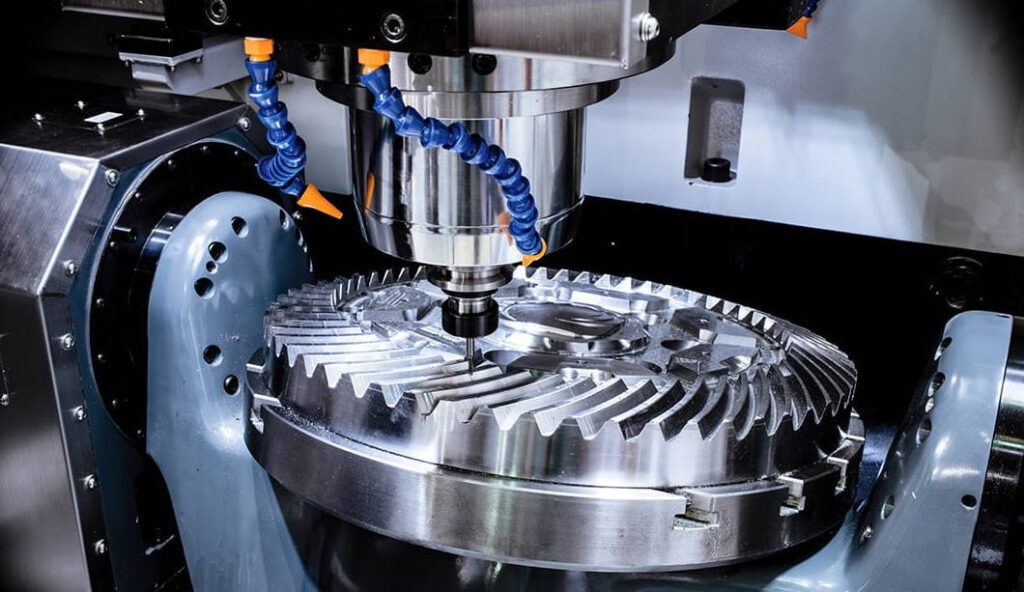
2. Properties of Stainless Steel in CNC Machining
Understanding the intrinsic properties of stainless steel is the first step toward successful CNC machining. These characteristics dictate not only the performance of the final part but also the strategies required to machine it effectively.
Key Characteristics of Stainless Steel
The primary properties of stainless steel are exceptional corrosion resistance, high strength and durability, and excellent hygienic qualities, making it a premier material for demanding applications.
- Corrosion Resistance: This is the hallmark of stainless steel. The chromium oxide layer protects the metal from rust and corrosion in a wide range of environments, from atmospheric exposure to harsh chemical solutions. Different grades offer varying levels of resistance, with higher chromium and molybdenum content (like in Grade 316) providing superior protection in chloride-rich environments like marine applications.
- Strength and Durability: Stainless steel alloys offer an excellent strength-to-weight ratio. They maintain their strength at both high and low temperatures and possess high tensile strength and hardness. This makes them suitable for parts that must withstand significant mechanical stress, impact, and wear over their lifetime.
- Hygienic and Non-Reactive: The non-porous and non-reactive surface of stainless steel makes it easy to clean and sterilize. It does not impart any flavor or odor to materials it comes into contact with, which is why it is the standard for food processing, medical devices, and pharmaceutical manufacturing.
- Aesthetic Appeal: With a variety of available surface finishes, from a bright mirror polish to a muted satin brush, stainless steel parts can be manufactured to be both functional and visually appealing.
Common Stainless Steel Grades in CNC Machining
While there are over 150 grades of stainless steel, a few are overwhelmingly popular in CNC machining due to their balanced properties and machinability.
| Grade | Key Properties | Common Applications | Machinability Rating (Approx.) |
|---|---|---|---|
| 304 | Excellent corrosion resistance, good formability, non-magnetic. The most common “18/8” stainless steel. | Kitchen equipment, food processing hardware, tanks, piping, architectural trim. | 45% |
| 316/316L | Superior corrosion and chloride resistance due to molybdenum content. “L” grade has lower carbon for better weldability. | Marine hardware, medical implants, chemical processing equipment, pharmaceuticals. | 40% |
| 17-4 PH | High strength, hardness, and corrosion resistance. Can be precipitation-hardened for extreme strength. | Aerospace components, high-performance shafts, gears, turbine blades. | 35% (Annealed) |
| 303 | “Free-machining” grade with added sulfur. Excellent machinability but reduced corrosion resistance and formability. | Shafts, nuts, bolts, fittings, gears where high-speed machining is prioritized. | 75% |
| 416 | Martensitic “free-machining” grade. High hardness (can be heat-treated) and best machinability among stainless steels. | Valves, pump parts, automatic screw-machined components, motor shafts. | 85% |
Machinability of Stainless Steel: Challenges and Considerations
Despite its advantages, stainless steel is notoriously more challenging to machine than materials like aluminum or low-carbon steel. The main challenges in machining stainless steel are its high work-hardening rate, low thermal conductivity, and overall toughness, which lead to increased tool wear and require specific machining strategies.
- Work Hardening: Austenitic grades like 304 and 316 harden rapidly during machining. The cutting action itself makes the surface layer harder, which places immense stress on the cutting tool during subsequent passes. To combat this, machinists must use sharp tools, a rigid machine setup, and maintain a consistent, deep enough cut to get under the previously hardened layer.
- Low Thermal Conductivity: Stainless steel does not dissipate heat well. The heat generated during cutting tends to concentrate at the tool tip rather than being carried away by the chip. This can lead to tool failure, welding of the chip to the tool, and a poor surface finish. The use of high-pressure coolant is essential to manage heat and evacuate chips effectively.
- Toughness and Gummy Nature: Stainless steel is not brittle; it is tough and ductile. This can result in long, stringy chips that are difficult to break and can wrap around the tool and workpiece, potentially damaging the part or the machine. Machinists use tools with specific “chip breaker” geometries and adjust cutting speeds and feeds to promote proper chip formation.
- High Cutting Forces: Due to its high strength, machining stainless steel requires more power and more rigid machine setups compared to other materials. Any vibration or chatter can lead to poor dimensional accuracy and a ruined surface finish.
Comparison with Other Machinable Metals
To put its properties into perspective, here is a comparison of stainless steel with two other common CNC machined materials: aluminum and titanium.
| Property | Stainless Steel (304) | Aluminum (6061) | Titanium (Ti-6Al-4V) |
|---|---|---|---|
| Density | ~8.0 g/cm³ | ~2.7 g/cm³ | ~4.4 g/cm³ |
| Tensile Strength | High (~580 MPa) | Low (~310 MPa) | Very High (~950 MPa) |
| Machinability | Difficult | Excellent | Very Difficult |
| Corrosion Resistance | Excellent | Good | Excellent |
| Thermal Conductivity | Low | High | Very Low |
| Relative Cost | Medium-High | Low | Very High |
3. Cost Factors in CNC Machining Stainless Steel
The cost of a CNC machined stainless steel part is a function of several interconnected factors. Understanding these drivers is key to designing parts that are both functional and economical to produce.
Material Cost
The raw material cost of stainless steel is significantly higher than carbon steel or aluminum primarily due to the expensive alloying elements like chromium, nickel, and molybdenum. These elements are essential for its corrosion resistance and strength. For example, nickel prices are notoriously volatile, directly impacting the cost of popular austenitic grades like 304 and 316. Furthermore, specialty grades like 17-4 PH or duplex stainless steels command an even higher premium due to their complex compositions and manufacturing processes. When quoting a project, the raw material can often account for 30-50% of the total part cost, especially for simpler designs.
Machining Complexity
The more time a part spends on a CNC machine, the more it costs. Machining time is directly influenced by the complexity of the part’s geometry.
- Part Design: Features like deep pockets, thin walls, small internal radii, and complex 3D contours require slower cutting speeds, multiple tool changes, and potentially more advanced 5-axis machining centers, all of which increase machining time.
- Tolerances: Achieving tight tolerances (e.g., ±0.001″ or ±0.025 mm) in stainless steel requires slower finishing passes, more frequent in-process inspection, and a higher level of process control. This increases machine time and labor costs. Specifying tolerances that are tighter than necessary is one of the most common drivers of unnecessary cost.
- Features: The number of features, such as tapped holes, O-ring grooves, and engraved text, adds to the overall cycle time. Each feature requires specific tooling and programming steps.
Tooling and Setup
The challenging machinability of stainless steel has a direct impact on tooling and setup costs.
- Tool Wear: Stainless steel’s toughness and abrasive nature cause cutting tools to wear out much faster than when machining aluminum. Machinists must use high-performance solid carbide tools, often with specialized coatings (like TiAlN or AlCrN), which are more expensive. The cost of tool replacement is factored into the part price.
- Setup Time: This is the time required to prepare the CNC machine for a specific job, including loading the program, mounting fixtures, setting up tools, and running a first-off inspection part. For complex parts requiring multiple operations or custom fixturing, setup costs can be substantial. These costs are amortized over the number of parts in a production run.
Volume and Batch Size
Economies of scale play a significant role in CNC machining.
- Small Production Runs (Prototypes): For quantities of 1-10 parts, the setup cost constitutes a large portion of the per-part price. This is why prototypes are inherently expensive.
- Large Production Runs: For runs of hundreds or thousands of parts, the initial setup cost is spread across the entire batch, dramatically reducing the cost per part. Additionally, the process can be highly optimized for efficiency, and material can be purchased in bulk at a lower cost.
Tips for Cost Optimization
- Simplify Design: Where possible, avoid deep pockets and thin walls. Use standard drill sizes and thread specifications. Increase internal corner radii to allow for larger, more robust cutting tools.
- Select the Right Grade: Do not over-specify. If the part operates in a mild environment, 304 may be perfectly sufficient and more affordable than 316. If machinability is a key driver, consider if 303 can be used instead of 304, provided its lower corrosion resistance is acceptable.
- Loosen Tolerances: Critically review your design and apply tight tolerances only where they are functionally necessary. For non-critical features, use standard machine tolerances.
- Increase Order Quantity: If possible, order parts in larger batches to benefit from economies of scale.
4. Surface Finishes for Stainless Steel CNC Parts
A surface finish is not just for aesthetics; it can be critical for a part’s function, durability, and corrosion resistance. Stainless steel parts can be finished in numerous ways after the primary machining operations are complete.
Overview of Common Surface Finishes
The most common surface finishes for CNC machined stainless steel parts include as-machined, polishing, brushing, bead blasting, and passivation, each offering a unique combination of aesthetic and functional benefits.
| Finish | Description | Typical Ra (µm) | Benefits | Common Applications |
|---|---|---|---|---|
| As-Machined | The standard finish left by the cutting tool. Visible tool marks. | 1.6 – 3.2 | Lowest cost, fastest turnaround. | Functional prototypes, internal components where appearance is not critical. |
| Brushing (#4 Finish) | A unidirectional satin finish created by sanding with a fine-grit abrasive. | 0.5 – 1.0 | Decorative, hides fingerprints, good aesthetic appeal. | Architectural trim, consumer appliance panels, decorative hardware. |
| Polishing (#8 Finish) | A multi-step process using progressively finer abrasives to create a mirror-like, reflective surface. | < 0.2 | Highly aesthetic, very smooth and easy to clean, improved corrosion resistance. | Reflectors, decorative parts, food and medical surfaces requiring high purity. |
| Bead Blasting | A uniform matte or satin finish created by bombarding the surface with fine glass beads. | 1.0 – 2.5 | Non-directional, low-glare matte finish, can hide minor surface defects. | Medical devices, parts requiring a non-reflective surface, aesthetic components. |
| Passivation | A chemical cleaning process that removes free iron and contaminants from the surface, enhancing the natural chromium oxide layer. | N/A (Does not change finish) | Maximizes corrosion resistance. A critical step for medical and aerospace parts. | All medical devices, marine hardware, aerospace fasteners, food-contact parts. |
| Electropolishing | An electrochemical process that removes a microscopic layer of material, resulting in a very smooth, bright, and clean surface. | < 0.4 | Ultimate smoothness and cleanability, deburrs parts, superior corrosion resistance. | Medical implants, pharmaceutical equipment, semiconductor components, food processing. |
Factors Influencing Finish Choice
- Application: A medical implant requires a finish like electropolishing for biocompatibility and sterility, whereas an internal engine bracket may only need an as-machined finish with passivation.
- Environment: For parts exposed to saltwater or harsh chemicals, passivation is not optional; it is a necessity to prevent corrosion.
- Cost: Finishes are secondary operations that add cost and lead time. A #8 mirror polish is significantly more labor-intensive and expensive than a standard bead blast.
- Aesthetics: For consumer products or architectural elements, the visual appearance (e.g., a brushed or polished look) is a primary design consideration.
Post-Machining Considerations
- Deburring: CNC machining can leave small burrs on part edges. These must be removed for safety, proper part assembly, and function. This can be done manually, via tumbling, or through processes like electropolishing.
- Cleaning: All parts must be thoroughly cleaned to remove cutting fluids, oils, and other residues from the machining process before they can be shipped or undergo further finishing.
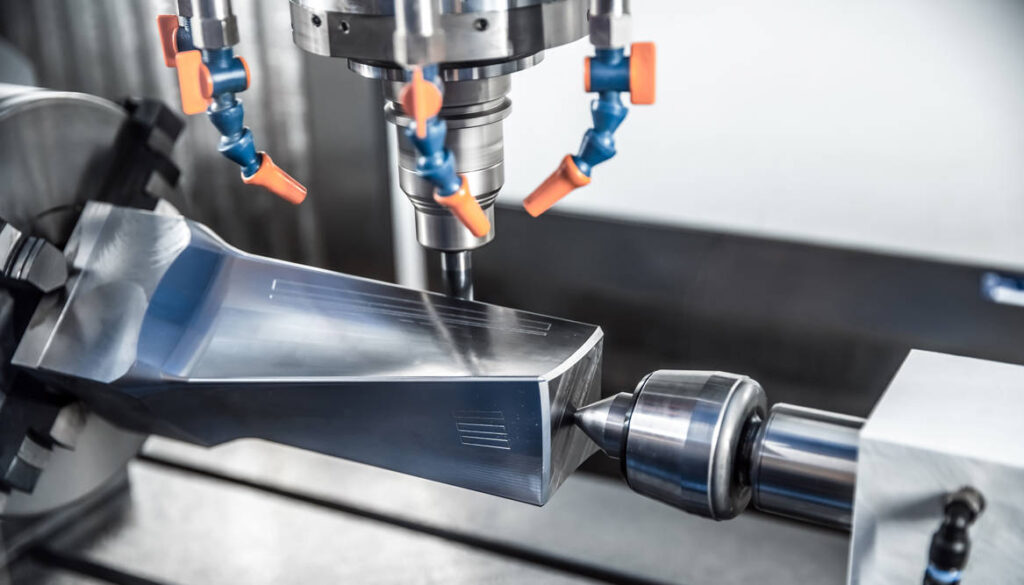
5. Common Questions and Concerns
Here we address some of the most frequently asked questions about CNC machining stainless steel.
How to choose the right stainless steel grade for a specific application?
To choose the right stainless steel grade, evaluate the part’s required corrosion resistance, strength, operating temperature, and budget. For general-purpose use with good corrosion resistance, 304 is the default choice. For marine or acidic environments, upgrade to 316. If the part requires extreme strength and hardness, 17-4 PH is an excellent option. If cost is critical and the part can be made with high-speed machining, 303 is a strong contender.
What are the lead times for CNC machining stainless steel parts?
Lead times typically range from 1 to 6 weeks. This depends on several factors:
- Part Complexity: Simple parts can be machined faster than complex ones.
- Material Availability: Standard grades like 304 and 316 are usually in stock, while less common alloys may need to be special-ordered.
- Quantity: Small prototype runs are often faster than large production runs that require more machine time.
- Finishing Requirements: Secondary operations like polishing, passivation, or heat treatment add to the overall lead time.
- Shop Capacity: The current workload of the machine shop will also influence delivery.
How to ensure tight tolerances and high-quality finishes?
Ensuring quality starts with a clear and well-documented design. To achieve tight tolerances and high-quality finishes, provide a detailed 2D drawing that clearly specifies all critical dimensions, tolerances, and surface finish requirements (including Ra values). Partner with a machine shop that has modern, well-maintained CNC equipment, a robust quality management system (like ISO 9001), and advanced inspection tools like a Coordinate Measuring Machine (CMM).
Can stainless steel parts be machined for food-grade or medical applications?
Absolutely. This is one of stainless steel’s primary strengths. For food-grade or medical applications, grades like 316L are preferred due to their high corrosion resistance and low carbon content. The parts must be machined using food-safe lubricants and undergo thorough cleaning, deburring, and passivation to ensure they are sterile, non-toxic, and free of contaminants. Finishes like electropolishing are often specified to create an ultra-smooth surface that resists bacterial growth.
How to balance cost and quality in stainless steel CNC machining?
The key is to define what “quality” means for your specific application. It’s about fitness for purpose, not perfection. Balance cost and quality by:
- Performing a thorough design review: Eliminate unnecessary features and overly tight tolerances.
- Selecting the most cost-effective material that meets all functional requirements.
- Communicating clearly with your machining partner: Discuss your design and budget constraints to find the most efficient manufacturing approach.
- Considering the total cost of ownership: A slightly more expensive, higher-quality part that lasts longer and performs more reliably is often cheaper in the long run than a low-cost part that fails prematurely.
6. Applications of CNC Machined Stainless Steel Parts
The superior properties of stainless steel make it a go-to material for critical components across numerous industries.
- Medical Devices: Due to its biocompatibility, sterilizability, and corrosion resistance, stainless steel is used for surgical instruments (scalpels, forceps), orthopedic implants (bone screws, joint replacements), and enclosures for diagnostic equipment.
- Aerospace Components: In aerospace, high-strength grades like 17-4 PH are used for landing gear components, structural fasteners, engine brackets, and sensor housings that must withstand extreme temperatures, vibration, and corrosive environments.
- Automotive and Motorsport: Stainless steel is used for high-performance exhaust systems, turbocharger components, fuel rails, and sensor bodies where heat and corrosion resistance are paramount. Its durability also makes it ideal for long-life drivetrain components.
- Industrial Equipment and Marine: In harsh industrial or marine settings, stainless steel is essential for pump and valve components, shafts, heat exchangers, and marine hardware (cleats, rigging components) that are constantly exposed to moisture and corrosive chemicals.
- Food and Beverage Industry: The hygienic properties of grades 304 and 316 make them the standard for food processing equipment, including tanks, piping, conveyor components, and mixing blades.
7. Choosing a CNC Machining Service Provider
Selecting the right manufacturing partner is as important as the design itself. Not all CNC shops are equipped to handle the challenges of machining stainless steel effectively.
Key Factors to Consider
- Experience with Stainless Steel: This is non-negotiable. An experienced shop will have the right knowledge of speeds, feeds, tooling, and coolants to machine stainless steel efficiently without compromising quality. Ask for examples of similar parts they have made.
- Certifications: Look for quality certifications like ISO 9001, which indicates a commitment to a documented quality management system. For aerospace or medical parts, specific certifications like AS9100 or ISO 13485 are often required.
- Equipment Capabilities: Does the shop have modern, rigid CNC machines capable of handling the high cutting forces? Do they have 5-axis machines for complex geometries? Do they have the necessary inspection equipment (CMMs, surface profilometers) to verify your parts meet specifications?
Importance of Clear Communication
Effective communication is the bedrock of a successful manufacturing partnership. Your provider should be a collaborative partner, not just a vendor. They should be able to review your design and provide Design for Manufacturability (DFM) feedback that could improve the part or reduce its cost. Ensure you provide them with complete and unambiguous documentation (CAD models and 2D drawings).
Questions to Ask Potential Service Providers
- What is your specific experience with machining [your chosen grade] of stainless steel?
- Can you describe your quality control and inspection process?
- What is your typical lead time for a project of this complexity and volume?
- How do you source and verify your raw materials?
- Can you provide DFM feedback on our design to optimize for cost and quality?
8. Conclusion
CNC machining stainless steel offers a powerful solution for producing strong, durable, and corrosion-resistant parts for the most demanding applications. While its material properties present unique machining challenges and contribute to higher costs compared to other metals, these hurdles can be easily overcome with proper design, strategic material selection, and partnership with an experienced CNC machining provider. By understanding the interplay between material properties, cost drivers, and finishing options, you can unlock the full potential of this versatile material.
For your next project, don’t let the complexities of stainless steel deter you. We encourage you to consult with manufacturing experts who can guide you through the process, from initial design to finished part. To get started, reach out to a qualified CNC machining service provider with your design files and requirements for a professional quote and expert consultation.

